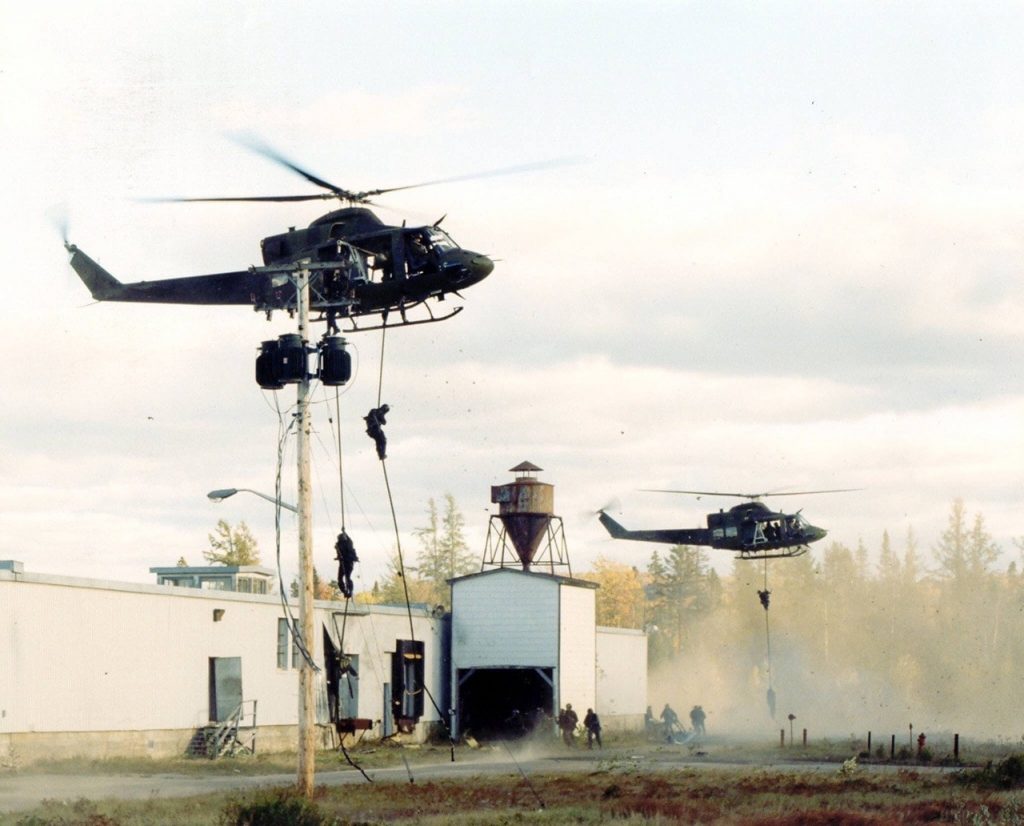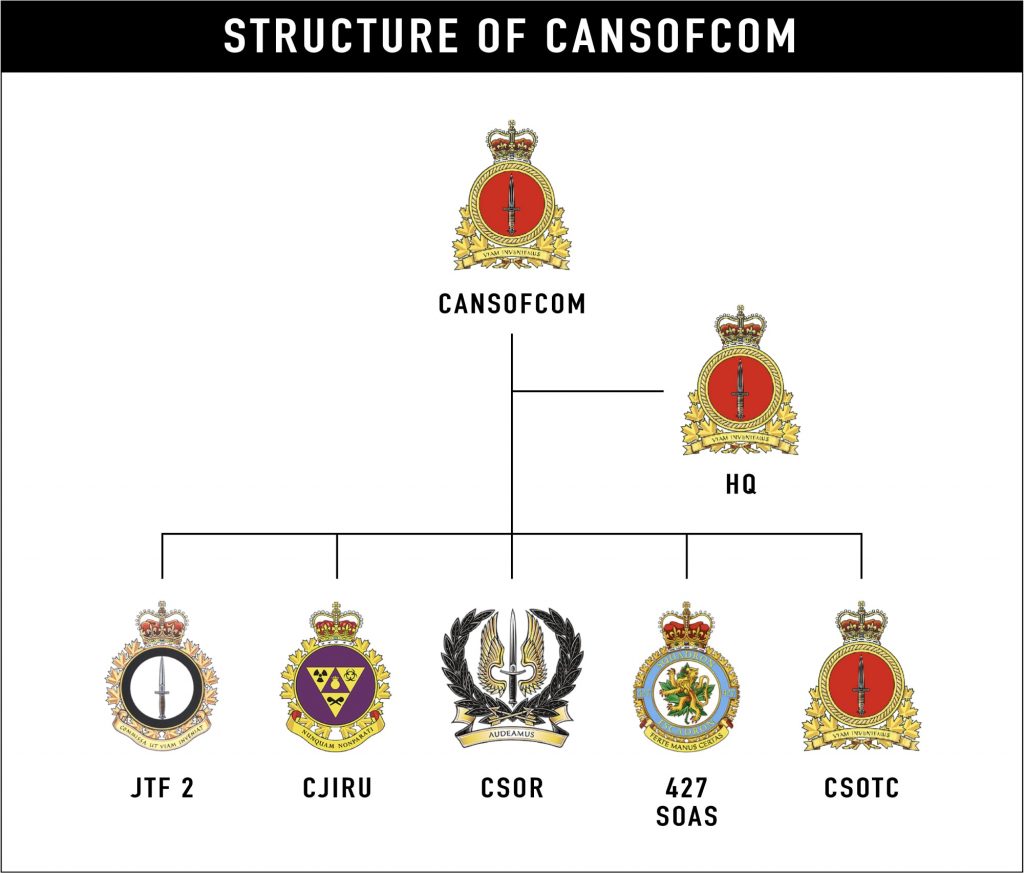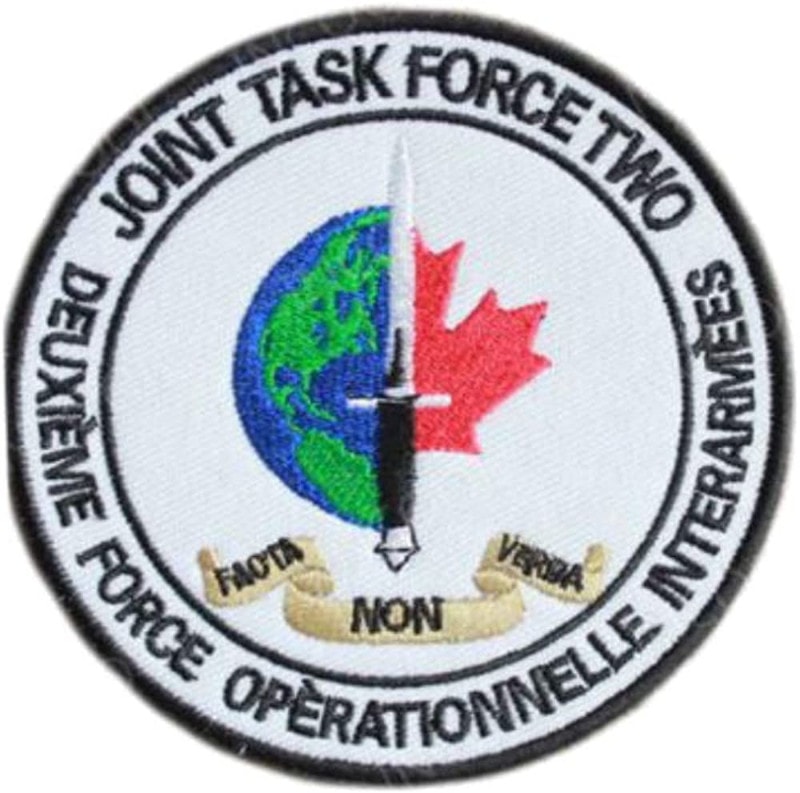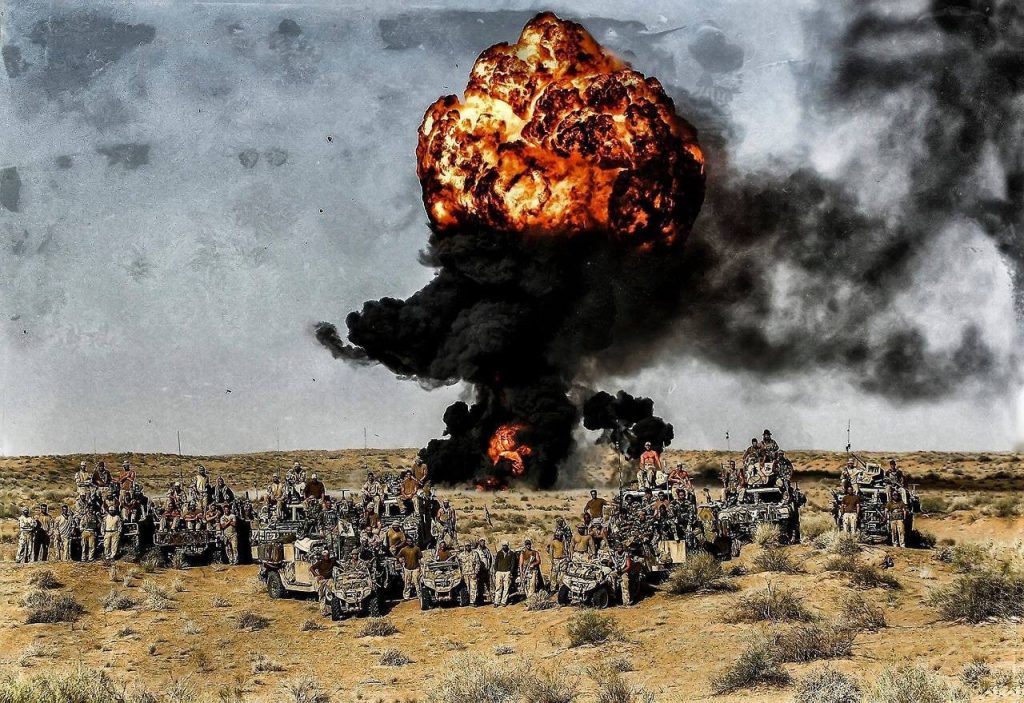JTF2: Canadian Elite Joint Task Force 2

Joint Task Force 2 (JTF2) is a highly secretive and elite special operations unit of the Canadian Armed Forces. He specializes in counter-terrorism operations, both at home and abroad ( source ).
1. History
Joint Task Force 2 was created in April 1993 ( source ). Previously, the Royal Canadian Mounted Police (RCMP) Special Emergency Response Team (SERT) was Canada's primary special operations force. The SERT, created in 1986, was in charge of the fight against terrorism and the rescue of hostages. As soon as it was disbanded, JTF2 became responsible for these tasks ( source ).
In 1993, the first 100 members joined the new unit. Most of the new recruits were members of Princess Patricia's Canadian Light Infantry and the Canadian Airborne Regiment ( source ). Subsequently, the personnel was divided into attackers and support personnel, which consisted of a sniper troop, an assault troop and a small staff.
A small aviation unit, designated "B" Flight, also supported Joint Task Force 2 ( source ). This unit included three helicopters and crews.
After 9/11, JTF2 participated in its first major overseas deployment and joined the international coalition of special operations forces in Afghanistan ( source ). In addition, the budget allocated to the unit has increased to $120 million over six years ( source ). This contributed to the expansion of JTF2's capabilities, the renewal of equipment and the recruitment of more personnel.

2. Organization of Joint Task Force 2
JTF2 is part of Canadian Special Operations Forces Command (COMCANSOF) and serves alongside Canadian Joint Incident Response Unit (CJIRU), Canadian Special Operations Regiment (CSOR) , 427th Special Operations Aviation Squadron (427 SOAS) and the Canadian Special Operations Training Center (CSOTC).

2.1 Assets of Joint Task Force 2
The JTF2 has about 300 people and the average age is 37 ( source ). JTF2 is headed by a lieutenant-colonel. The unit's base is located at the Dwyer Hill Training Center in a rural area of Ottawa ( source , source ). The center would house:
- A close combat facility
- A DC-10, an American trijet jumbo jet
- A gym
- An Olympic swimming pool
- A well-equipped shooting range
- An 8-story building for hostage rescue training
The unit is made up of teams of two or four men, also called "bricks" ( source ). Each brick has a specific specialty, such as sniping or communications.
3. JTF2 Tactics, Techniques and Procedures (TTPs)
Joint Task Force 2 is a rank 1 unit since it is typically employed in direct action operations ( source ). JTF2 focuses on counter-terrorism operations, which can take place both in Canada and abroad ( source ). The unit specializes in hostage rescue, foreign home defense, protective security, special reconnaissance and surveillance.
3.1. Tactical
- Climb cliffs and ladders
- Fight a close battle
- Disarming
- Ground fighting
- Raise and pull
- Displacement of a non-compliant person
- Parachuting
- Abseiling

3.2. Selection of candidates
Unit applicants must have previous military experience to be considered. Gender and marital status are not considered factors throughout the selection process, although the unit has not yet recruited women into its ranks ( source , source ). The general conditions to join the JTF2 for all applicants are as follows:
- A minimum of two years of military service for the Regular Forces and three years for the Reserve Forces;
- Be able to obtain a security clearance and pass the appropriate medical examination;
- Complete the Prescreen Physical Fitness Test (PFT);
- Skydiving training.
There are three ways to become a JTF2 member. The first is as a Special Operator Assaulter (SOA), which is directly usable in tactical tasks. The second path is as employable personnel in combat support tasks. Finally, the third is the recruitment of combat service active support personnel.
The path to becoming a JTF2 member is long and very difficult ( source ). The training is physically and mentally tough, and the course is designed to be very selective. Therefore, recruits must pass a number of tests to progress.
3.3. The Preselection Fitness Test (PFT)
The JTF2 PFT for Special Operator Assaulter consists of:
- 20 meter shuttle;
- Minimum 40 push-ups and 40 sit-ups in one minute;
- Minimum five pull-ups;
- Combat swimming test which consists of a 25 meter swim in combat uniform, boots, rifle and without flotation;
- 13 kilometer heavy walk with 35 kg in less than two hours and 26 minutes;
- Evacuation of wounded of a soldier of similar size (minimum 70 kg) at a distance of 25 meters carrying his own weapon and that of the "victim".
During the seven days of the JTF2 Assessment Center, which follows the PTF ( source ), the candidate will be assessed on:
- Individual and team tasks;
- Personal skills;
- phobia tests;
- Fitness;
- Psychological profile.
This phase is fundamental to the whole process as it will assess whether a candidate is able to:
- Handle weapons;
- Identify and respond to threats;
- Make decisions under mental and physical duress;
- Remember directions and locations with precision.
3.4. Coaching
Members of Joint Task Force 2 are trained to an incredibly high standard ( source ). Discretion and professionalism are the characteristics that characterize this unit. Accordingly, the final stage of selection is the Special Operations Assaulter (SOAC) course, which lasts approximately seven months ( source ). During SOAC, future members of JTF2 will train in basic and advanced weapons, insertion and extraction techniques, land navigation and patrolling.
5. Doctrine
The JTF2 motto is "facta non verba", which translated from Latin means "deeds not words", and is also found on the unit crest. In the middle there is a V-42 stylus, which is CANSOFCOM's main symbol. On the right, there is the red maple leaf, the national symbol, and on the left, there is a representation of Canada on a geographical map.

6. Equipment
JTF2 operator equipment consists of:
6.1. Rifles
- Colt Canada C7;
- Colt Canada C8;
- Colt Canada C8FSW.
6.2. submachine guns
- Heckler & Koch MP5A2;
- Heckler & Koch MP5A3;
- Heckler & Koch MP5SD.
6.3. sniper rifles
- M82 strip;
- Timber Wolf C14;
- Heckler & Koch PSG1;
- M110 Semi-Automatic Sniper System (SASS);
- McMillan TAC-50.
6.4. Other equipment
- FN Herstal P90 as a personal defense weapon.
- SIG Sauer P226 as a handgun. The Canadian Army has decided to retire the SIG Sauer P320 from service for a few months due to an accidental discharge that injured a member of JTF2 in June 2021 ( source ). JTF2 is currently the only Canadian Army unit to possess the SIG Sauer P320.
- Benelli M3 and Remington Model 870 as shotguns.
- FN Minimi C9A1 as a light machine gun and M2 Browning as a heavy machine gun.
- M203 grenade launcher and Heckler & Koch GMG as automatic grenade launchers.
- Saab Bofors Dynamics AT4 as an anti-tank weapon.
7. Notable Joint Task Force 2 Operations
7.1. Zaire
In November 1996, the Canadian Army employed JTF2 as a protection unit in Zaire ( source , source ). His task was to help Canadian General Maurice Maril meet Rwandan-backed rebel leader Laurent Kabila. Along the way, Congolese militias also attacked JTF2 convoys. The same year, Joint Task Force 2 was also deployed to Haiti to advise and train the security forces of former President René Préval ( source ). Accordingly, the training focused on how to loot weapons and fend off revolutionary weapons.
7.2. Haiti
In February 2004, the Canadian Army again deployed JTF2 to Haiti ( source , source ). On the 29th, the unit special operations elite took control of the airport from where then-President Jean-Bertrand Aristide was taken by US Marines ( source ). The task of the unit was also to protect the Canadian Embassy during this time of crisis.

7.3. Vancouver Olympics
In 2010, troops from Joint Task Force 2 were assigned to provide support and security during the Vancouver Winter Olympics ( source ). While some forces were on standby, others were supporting the Royal Canadian Mounted Police ( source ). Even though the threat level during the Olympics was low, the Canadian government chose to increase the defense budget at this time to provide additional security. The army's total budget during the 2010 Games was approximately $165 million (C$212).
The JTF2 also provided security for prominent figures in combat zones. In May 2007, JTF2 assisted Stephen Harper, then Prime Minister of Canada ( source ).
7.4 Joint Task Force 2 in Afghanistan
Following the attacks of September 11, 2001, the Canadian government decided to send approximately 40 JTF2 soldiers to Afghanistan as part of Task Force K-Bar ( source ). Significantly, this was the unit's first major combat deployment outside of Canada. The K-Bar task force was ultimately made up of around 3,000 special operations officers from several international forces ( source ).
The Canadian government did not initially announce JTF2's involvement in Afghanistan ( source ). He was later discovered by various photos published by The Globe and Mail showing JTF2 members escorting detainees and delivering them to the Americans. During the period between December 2001 and November 2002, JTF2 soldiers claimed to have captured 107 Taliban leaders and killed 115 Taliban or al-Qaeda militants ( source ).

In March 2002, JTF2 participated in Operation Anaconda. During this operation, the reconnaissance team participated in direct action missions and close protection tasks. JTF2 worked alongside the New Zealand Special Air Service and US Army Special Forces Operational Detachment-A ( source ). Later, in July 2005, the Canadian government sent more units to Afghanistan and fought the remaining al-Qaeda fighters ( source ). JTF2 was attached to an American special forces command at the Kandahar base. In 2004, JTF2 received a commendation for heroism from then-US President George W. Bush for its efforts in Afghanistan ( source ).
In August 2021, the Canadian Army deployed JTF2, alongside CSOR, to Afghanistan to destroy sensitive documents and to assist in the evacuation of personnel from the Canadian Embassy in Kabul following the takeover. of the Taliban.
7.5. JTF2 in Iraq
In 2006, JTF2 worked alongside the United States and the United Kingdom to rescue four Christian peace activists in Iraq ( source ). Swords of Righteousness Brigade, a small terrorist group, had kidnapped them in Baghdad. However, two of these activists were from Canada, one from the United Kingdom and one from the United States.
In response to the kidnapping, Task Force Knight, which was the British Special Forces' task force in Iraq, launched Operation Lightwater ( source ). The 22nd n/a Britain's Special Air Service Regiment (SAS) was to find and recover the four hostages, the United States to provide technical intelligence, and JTF2 to assist the SAS during the operation. On March 23, 2006, the SAS rescued three hostages but found the fourth dead. Although the Canadian government has not commented on the mission, the UK Foreign Office and the Pentagon have mentioned the fundamental role of JTF2 during the mission ( source ).
In 2014, JTF2 also participated in Operation Impact ( source ). Impact was a Canadian operation to train the Iraqi government army to fight the Islamic State in Iraq. The training is mainly based on improving the skills of the Iraqi armed forces, such as training in the use of heavy machine gun fire and rocket-propelled grenades (RPGs), as well as providing subject matter expertise. of battle planning. After receiving sniper training, Iraqi officials noticed a "tenfold increase" in Iraqi sniper activity against ISIS.
7.6. sniping in syria
The 22nd June 2017, a JTF2 soldier killed an Islamic State fighter from a distance of 3,540 meters (2.2 miles) – potentially the longest range snipe ever publicly recorded ( source ) . The sniper and his spotter were stationed on top of a skyscraper and the shot took nearly ten seconds to hit the target. The rifle used was a large caliber McMillan TAC-50 .50. This broke the previous record set by the British corporal. of horse Craig Harrison set the previous record in 2009, who shot 2,500 meters (1.5 miles) away ( source ).
8. Summary
Therefore, JTF2 is a highly selective and specialized unit of Canadian Special Forces and has undoubtedly been instrumental in multiple Canadian and international military efforts. The unit has achieved high honors due to its work in the war on terrorism and its commitment to operations in support of national security.
0 comments